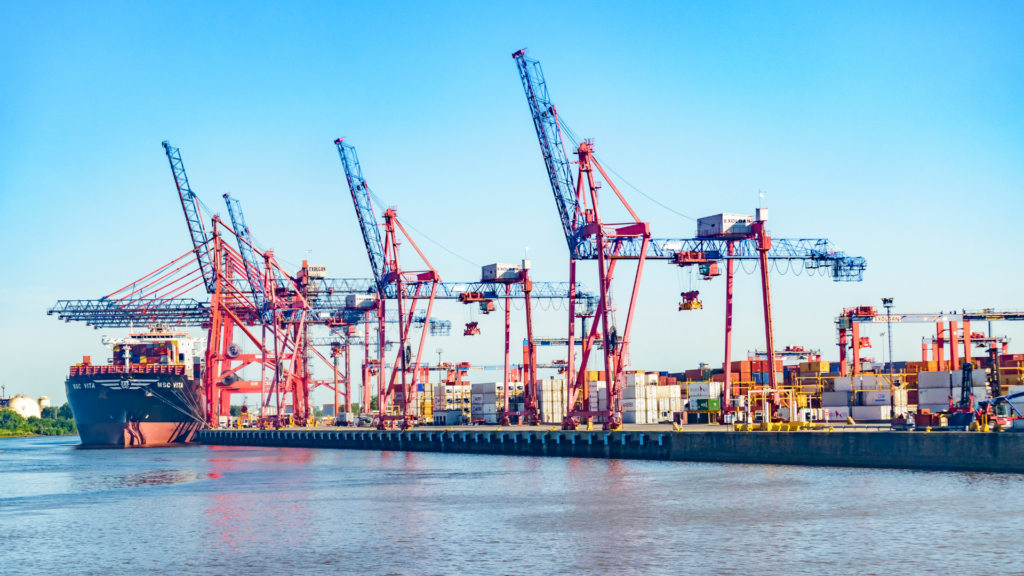The smart port concept is increasingly present in the maritime industry. Entities all over the world are working to stay ahead of the digitalisation race and position themselves as the smartest. But what are the real differences between a smart port and a conventional port?
We tell you what a smart port is, how it differs from a conventional port and what are the main advantages of managing these logistics centres in a more optimised and efficient way.
What is a smart port?
Smart ports are those that are more competitive due to the use of technology. Digitalisation and tools such as the Internet of Things (IoT) and big data allow them to use information collected in real time, to gain in efficiency, sustainability and safety.
This improvement is important in an environment where ports need to optimise their activities to remain competitive in the international market. However, in the race to achieve digitalisation, not all ports are moving at the same pace.
Which are the differences between a smart port and a conventional port?
According to Deloitte, ports have undergone structural and functional change over the last decades. The consultancy speaks of several generations in the development of ports:
- A first generation based on loading and unloading ports (until the 1960s).
- A second generation of industrial ports (until the 1980s).
- A third, in which logistics and supply chains became important (from the 1980s onwards).

Today, integrating digitalisation makes possible a fourth phase: the one with smart ports. The role of technology makes ports function as service providers, not only physical as in the case of crane and cargo operators, but also digital, as data service providers.
These are some of the features of smart ports that make them different from its previous generation:
1. Use of innovative technologies
While traditional ports continue to entrust a large part of their activities to manual processes and management, smart ports are betting on the use of digital technologies and tools to optimise the most repetitive and difficult tasks, to reduce work times and limit margins of error.
Moreover, the different tools can be connected and coordinated with each other to achieve the same objective and thus improve the performance of ports operations. These include IoT, Big Data, Virtual Reality, Edge Computing, Artificial Intelligence, Digital Twins, autonomous vehicles and Blockchain.
2. Increased efficiency
Unlike traditional ports, smart ports use technology to optimise each of their activities. In this way, they streamline their processes, reduce the number of operations and maximise the value of their assets.
In a traditional port, for example, the entry and exit of ships and their cargo is recorded manually. Smart ports, on the other hand, have automatic and intelligent reading methods for license plates and dangerous goods codes, with automated systems for capturing and recording information to improve the traceability of cargo, for example.
3. More sustainable
Ports are the site of a large number of loading and unloading operations, sometimes involving products that can pollute the seas and the surrounding environment. Smart ports have more options than traditional ports to limit accidents and, if they do occur, they detect them and solve them quickly.
In addition, the optimisation of tasks significantly reduces the emission of greenhouse gases that are responsible for climate change, such as carbon dioxide (CO2).
4. Increased attractiveness of the environment
Ports have always been vitally important enclaves in coastal towns and their economies. Traditional ports attract economic activity, generate direct and indirect employment and promote the creation of infrastructure, among other benefits. However, smart ports go beyond and can also function as dynamising agents and drive faster progress in their environment thanks to digitisation and automation.
As Deloitte points out, the real smart ports are those that use the full potential of IoT and data, that manage to identify and take advantage of new business models within the large ecosystem in which they move.
5. Increased security
Ports are a hub of activity where employees, machinery, external operators and many other agents converge, and where safety is essential. The daily tasks of both conventional and smart ports include preventing collisions, avoiding spills and other environmental impacts, and reducing occupational accidents.
Fortunately, smart port technologies have the ability to keep track of operations and thus greatly reduce these risks, and anticipate equipment and machinery maintenance tasks. This, in the long run, also has an impact on the safety of employees, so clearly adopting the processes to make ports smart is a key challenge for the industry.
References:
‘Smart Ports: Point of View’, Deloitte

Follow us and subscribe to our newsletter
If you want to keep up to date with the latest news from about technology in port logistics and utilities, subscribe to our newsletter. You will regularly receive the most important content and news from our blog in your mailbox.
Follow us also on our social profiles in LinkedIn, Twitter, YouTube, Instagram and Facebook.